Piezo Actuators
Piezo actuators are excellent choices for precision positioning and motion control applications. Solid-state flexures provide smooth, stiction-free, and backlash-free motion for positioning applications. Requires no lubrication. Generates no particulate.
FPA Series
Flextensional Piezo Actuators (FPA) are high travel, high/moderate stiffness, mechanically amplified actuators. Travel ranges up to 2000 µm.
LFPA/LPA Series
Lever-Amplified Flextensional Piezo Actuators. (LFPA) have travel ranges up to 10 mm. (LPA) has high dynamic bandwidth up to 1 mm.
PSA Series
Piezo Sagittol Actuators (PSA) offer exceptionally high operating frequencies due to minimal moving mass.
NA Series
Non-Amplified Piezo Actuators (NA) are high-force, high-stiffness, direct-action with excellent frequency response.
Piezo Actuators Customizable To Your Application
Piezoelectric actuators from DSM are created using a design process that addresses a wide range of functionality and environmental specifications. Four basic actuator architectures are available: NA, FPA, LFPA/LPA, and PSA. While a number of ready-to-order options are available, the majority of DSM’s actuators are uniquely designed to specific customer requirements (not shown on the website). Please contact DSM’s to explore custom hardware for your application.
The architectures shown below have been customized many times to meet customer specifications. Contact us today to discuss your application including: UHV, Shock Hardened, Cryogenic, Non-Magnetic, High Stiffness and Wide Operating Temperature Range (thermally compensated piezoelectric actuators offer a much higher temperature range as they are less effected by thermal changes.)
FPA Series Actuators - Energize to Expand
The FPA architecture offers both "energize to expand" (output moves up from 0 to +150V; down from 0 to -30V) and "energize to contract" (output moves down from 0 to +150V; up from 0 to -30V). Both use flexures to mechanically amplify the motion of piezoelectric ceramic stacks (PZT).
The piezo actuators listed below are ordered from smallest to largest travel range, from 85µm to 2mm.
Contact us for customized solutions.
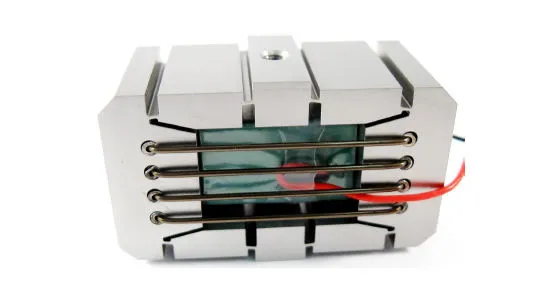
FPA Series Actuators - Energize to Contract
The FPA architecture offers both "energize to contract" (output moves down from 0 to +150V; up from 0 to -30V) and "energize to expand" (output moves up from 0 to +150V; down from 0 to -30V). Both use flexures to mechanically amplify the motion of piezoelectric ceramic stacks.
The piezo actuators list below are ordered from smallest to largest travel range, from 85µm to 2mm.
2 ready-to-order models are available. Contact us for customized solutions.
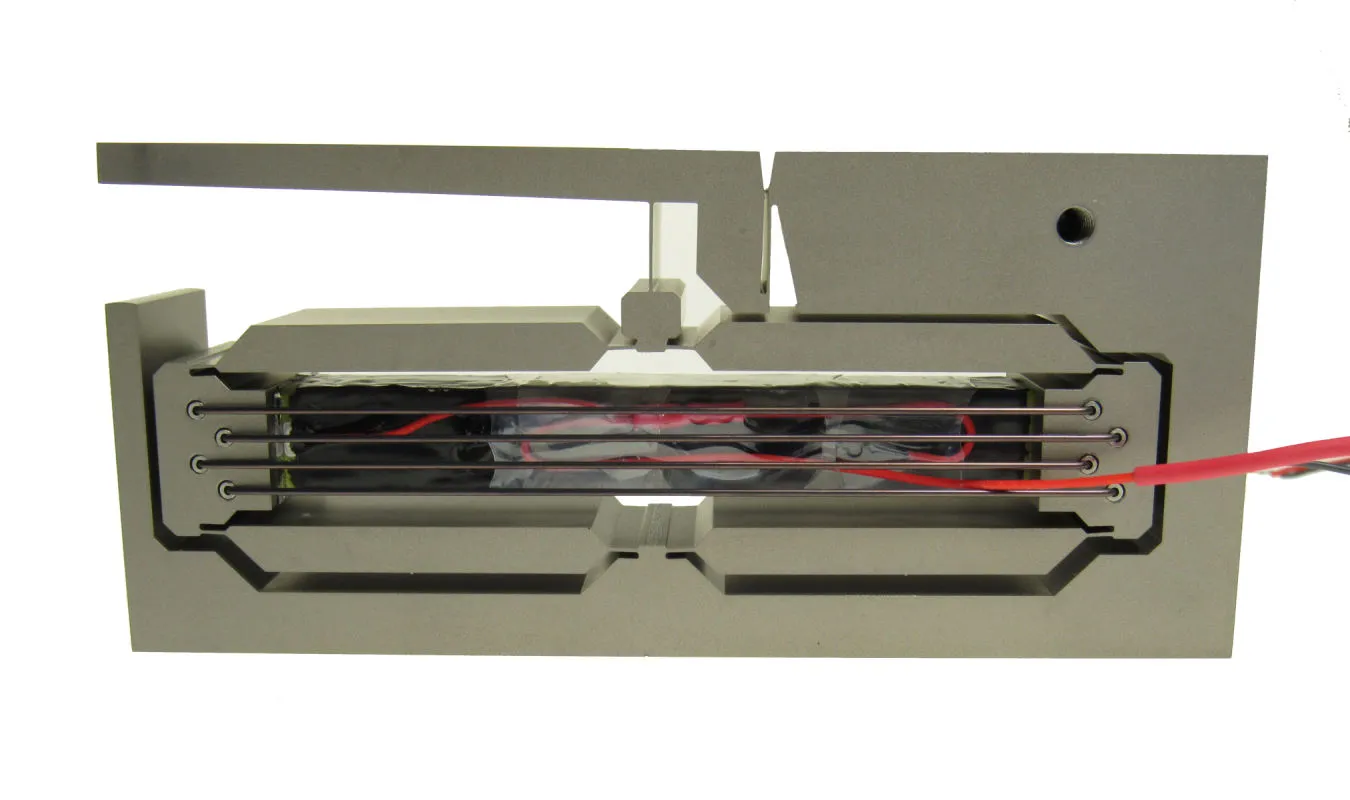
LFPA/LPA Series Actuators
LFPA actuators include a secondary mechanical amplification to attain motion ranges up to 10mm with the tradeoff of stiffness. LFPA output motion is arcuate.
LPA architecture provides >2x the operating frequency of the same stroke FPA design.
3 ready-to-order models are available. Contact us for customized solutions.

PSA Series Actuators
The PSA architecture has a lower moving mass for higher operating frequencies. It can be designed with travel ranging from 200 to 1500 µm.
3 ready-to-order models are available. Contact us for customized solutions.
NA Series Actuators

The NA series actuators are well-suited to applications where high force and high frequency response are required. NA actuators are direct-drive harnessing the high block force of the piezoelectric ceramic stack (PZT). The frame includes a mechanical preload that ensures successful bi-directional operation under dynamic operating conditions. The NA architecture can be readily adapted and scaled to other force and stroke ranges.
2 ready-to-order models are available. Contact us for customized solutions.
Overview of How Piezo Actuators Work
Piezoelectric ceramic materials are an electro-active ceramic. “Piezo-ceramics” expand/contract with applied electrical charge. When assembled into a piezo stack (many parallel layers), applied control voltage effects travel on the order of 0.1% to 0.2% of the piezo stack length. In piezo actuators, this travel becomes useful as actuation work (power) for a variety of applications. Piezo stack linear actuators might be considered as expanding springs, able to provide force and displacement as the control voltage drives them to expand/contract. This piezo actuator tutorial covers how piezo actuators work, the major application benefits, flexure-guided actuator properties and characteristics, frame architectures, travel, force, frequency, and how to select a piezo actuator for your application.
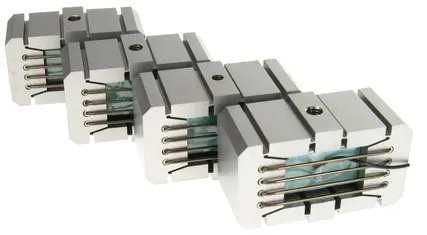
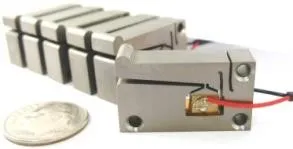
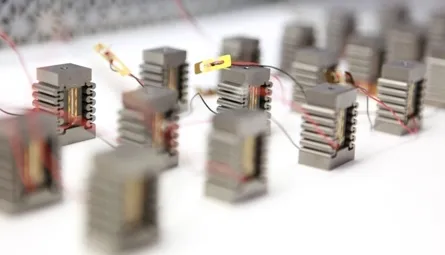
Major Application Benefits of Piezo Actuation Systems
• Premium Force-to-Weight Ratio
• Significant Power-to-Volume Ratio
• Flexure-Based Yields Zero Backlash
• Wide Bandwidth Operation
• Sub Nanometer Proportional Displacement possible with high resolution feedback
• Extreme reliability (billions of cycles)
• Solid-State Design Reduces Component Count
• No Lubrication needed
• Nonmagnetic Construction Possible
• Vacuum Compatible
Introduction to Flexure-Guided Piezo Actuator Properties
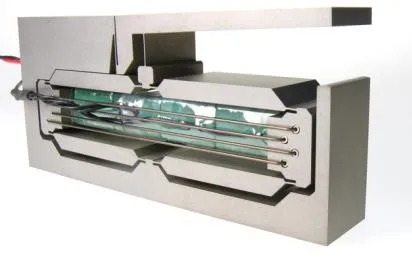
The active piezo stacks in DSM’s piezo flexure actuators are located in the center of a surrounding flexure-frame. DSM’s flexure-frames provide mounting options to guide travel, compressive preloads to protect the piezo ceramic, and solid-state flexures to enhance response. To mechanically amplify the small piezo travel range, DSM’s amplified flexure-frames use kinematic levers to amplify travel up to 10 mm. Since output travel is controlled directly by input voltage, piezo flexure actuators provide proportional displacement response. Solid-state flexures within DSM’s actuator frames provide quiet, lubrication-free, vacuum compatible and nonmagnetic travel possibilities.
Non-Amplified Actuator (NA)
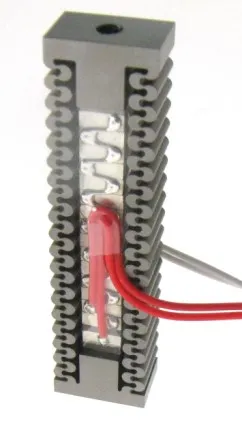
High resonant frequency and high force capability.
Non-amplified actuators use a direct-drive design leading to higher resonant frequencies than mechanically-amplified piezo actuators. Piezo material expansion directly creates output travel. The flexure-frame provides beneficial preload and convenient mounting options. NA actuator flexures are designed to minimize preload frame impedance to the piezoelectric travel and increase the actuator’s stiffness. Compressive preload enhances tolerance to external loads. Some specialty NA actuators may support compressive/tensile load to >2000 N.
Flextensional Piezo Actuator (FPA)
FPA is typically the most efficient mechanism for converting piezo energy to actuator work. Standard nominal travel values are 50 µm to >2000 µm.
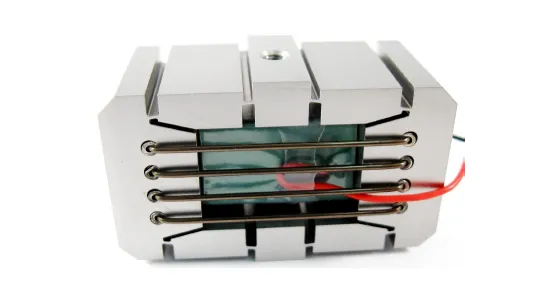
The Flextensional Piezo Actuator (FPA) is an optimal configuration for mechanically amplified piezo actuators. DSM’s flexure-frame uses carefully designed flexures and preload bands which leads to greater conversion of piezo energy to output work. An amplified flexure-frame is a solid-state mechanism which means that there are no traditional pivots within the device. The flexure, also known as a living hinge, enables rotation while limiting play in the mechanism.
The FPA geometry consists of a central piezo stack compressed by preload bands between two solid endcaps. Kinematic flexures connect the endcaps to flextensional arms and to the output blocks. DSM offers both energize-to-expand and energize-to-contract FPA geometry. When the piezo is energized, the output blocks expand away or contract toward the frame center.

FPA geometry is available in single-arm or double-arm construction to provide additional output guidance stability. In double-arm construction, the extra set of arms reduces the potential for output block rotation. DSM’s range of FPAs offers a wide selection of open-loop displacement, stiffness, blocking force and resonant frequency.
The preload bands in DSM’s actuators especially enhance the actuators ability to carry compressive and tensile loading. The preload level is carefully designed to limit the potential for the endcaps to separate from the piezo stack under allowable operating conditions. If loading has the potential to drive the endcaps away from the piezo stack (e.g., when the FPA is "overloaded" in the direction of its designed travel instead of opposite), the preload holds the piezo stack in contact with the actuator frame. When applications require significant loading in the same direction of travel, DSM may customize the actuator design with additional preload elements.
Piezo actuator flexure-frames can be made from nonmagnetic materials for high magnetic field applications. Piezo actuators can be used for cryogenic and vacuum applications. Composite frame materials can be implemented where weight savings is crucial.
Lever-Amplified Piezo Actuator (LFPA and LPA)
Simple lever mechanism lowers moving mass to promote higher resonant frequency.
Lever-amplified piezo actuators (LPAs) may have a higher natural frequency than a Flextensional Piezo Actuator (FPA). Using a simple design geometry of a classic lever and fulcrum, the piezo stack provides the applied force or displacement to move the output load. Using the simple lever geometry, the output arm may be designed with a lower moving mass than other amplified actuator types. With less moving mass, the actuator output resonant frequency may be higher than a comparable FPA actuator. The LPA series has clear access to both sides of the actuator output, which can be beneficial. It also offers access to both sides of the stack, which allows creative enhancements such as the addition of a radiation shield or additional sensors.
LPAs can have a two-stage amplification mechanism as in the Lever-amplified Flextensional Piezo Actuator (LFPA). The combination of two amplification stages can provide a large nominal travel value up to 10 mm in a mechanical volume less than 20 x 50 x 100 mm. LFPAs and LPAs can be configured to expand or contract when energized.
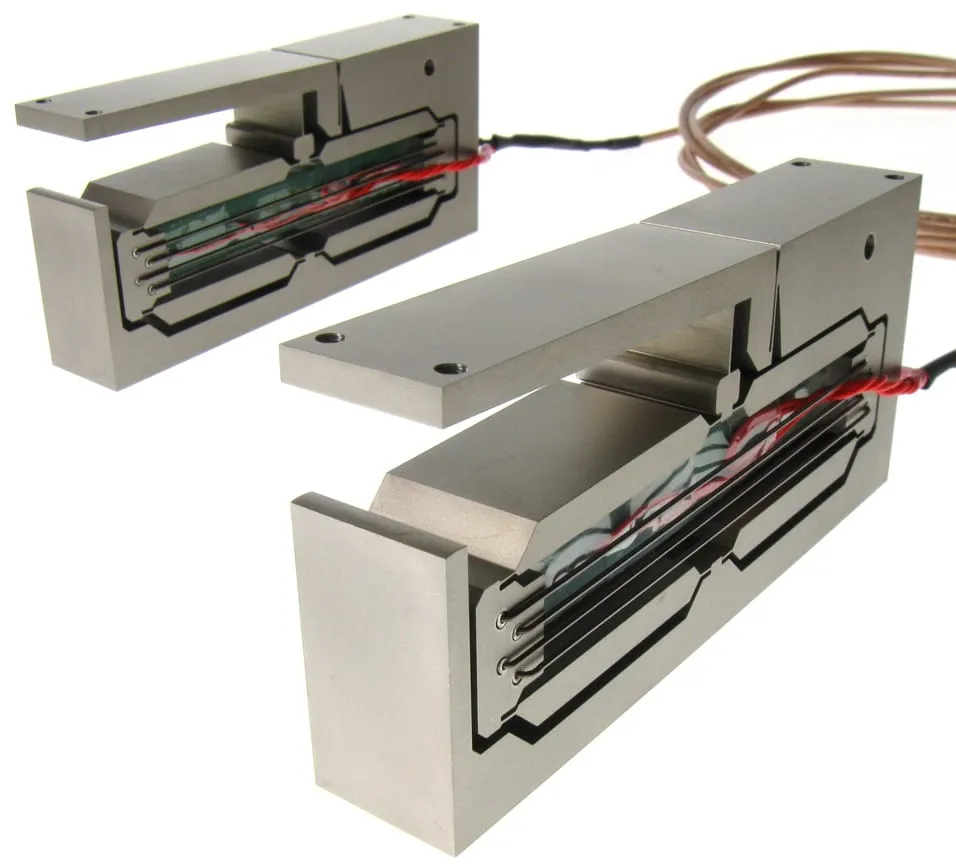
High-Frequency Piezo Actuator (PSA)
Higher resonant frequency than FPA's and greater stiffness than LPA's, PSA's may provide a beneficial compromise.

PSA nominal travel ranges from 200 to 1500 µm with corresponding resonant frequencies greater than 3 kHz and 400 Hz, respectively. A wider bandwidth of operation is possible with PSA actuators than other flexure-based actuation technology. Since these actuators have a lower moving mass, they have a greater resonant frequency for comparable actuator stiffness values. The PSA series’ significant displacement with resonant frequency greater than FPA actuators makes them suitable for shutters, high-frequency valves, switches and high-speed industrial automation.
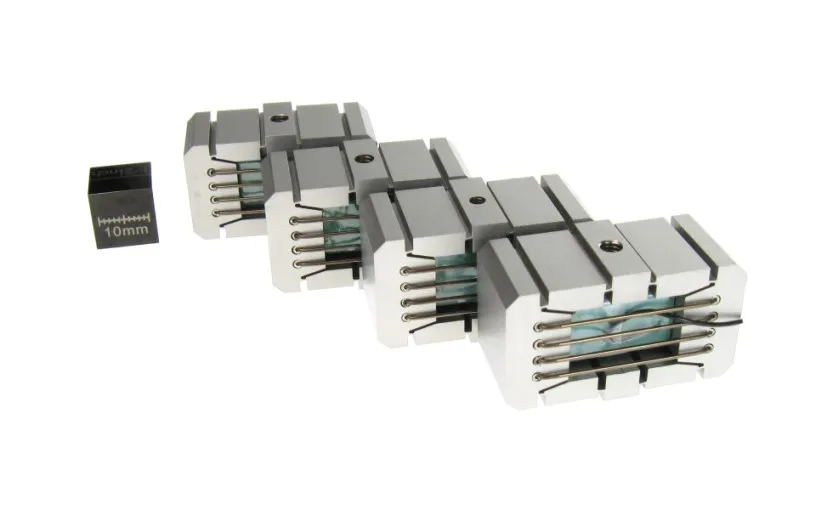
Custom Piezo Actuators
Most of the piezo actuators and stages DSM makes don't show up on the website. If what you are looking for isn't quickly found on the site (or you are not sure exactly what you need), send us an email. You will get a quick response from our technical experts who will listen and work with you to get a solution.
If you have an original equipment manufacturer (OEM) application that requires precision hardware and electronics, give DSM the chance to earn your business. DSM's specialty is providing OEMs with solid, competitively priced custom actuator products and an excellent customer experience. Whether you need 10 or 10,000+ units per year, DSM can design, manufacture, assemble, and test products on site. In addition to standard options, DSM can provide high stroke, high resolution, and harsh environment products.
Engineers, product managers and OEM buyers quickly realize that they can get the best unit prices along with the service and technical attention they want from DSM. Contact us to find your precision motion solution.
Piezo Actuator Application Examples
High Power Rotary Actuator for Kinetic Energy Weapons
SBIR Contract
DSM developed a rotary piezoelectric driven actuator for use in the Sandia RAZAR Adaptive Zoom Rifle Scope
In the News:
• Sandia National Labs: Adaptive zoom riflescope prototype has push-button magnification
• POPULAR SCIENCE: Sandia Labs Reveals New Sniper Sight
• New Atlas (formerly Gizmag): RAZAR riflescope brings push-button zoom to the battlefield
Faster High-Cycle Fatigue Tests using Piezoelectric Actuators
DSM custom designs high-cycle fatigue (HCF) test actuators for unique fatigue test applications. Fatigue tests create repetitive stress events within sample material and structural specimens for millions to billions of cyclic events. Exposure to repeating stress events is critical for determining the potential life of a part or the number of cycles required to fracture a specific material or structural specimen in a given scenario. High-cycle fatigue stress event magnitudes are typically much lower than a material’s yield strength. Since the repetitive events may last tens of millions to billions of cycles, using piezoelectric actuators that can operate at frequency in the hundreds to thousands of hertz range may significantly reduce fatigue test duration.
DSM’s piezoelectric flexure-based actuators may be used to apply various force levels with multi-micron displacement to study electrical junctions, sensitive structural components, and delicate instrument materials. Piezoelectric actuators may be used in fatigue test systems to greatly reduce the amount of time required to achieve failure – or test completion. Fatigue tests that would last months at 50 Hz can be completed in less than 2 weeks at 1000 Hz with piezoelectric-actuator-based cyclic fatigue test instruments.
Use of flexure mechanisms results in a solid-state device that can be designed with flexure stress states well below flexure material endurance limits. Avoiding the use of rotary bearings also provides the benefits of friction-less, low-noise, and lubrication free operation. Especially in very short stroke linear travel fatigue testers, flexures may have greater endurance limits than rotary bearing alternatives.
Vacuum, High Temperatures, Non-magnetic, Cross Axis Excitation
Piezoelectric actuator-based high-cycle fatigue test machines may also be designed to provide function in extreme environments such as vacuum, non-magnetic or those requiring supplementary vibration axis. With the correct selection of piezoceramic formulation, temperature specifications to greater than 200 C maybe achieved. Applications in dispensing of engine fuels (fuel injectors) are some of the most significant high temperature applications for piezoelectric stack actuators. Additional industrial applications include precision fluid regulation in semiconductor production, precision dispensing of industrial process fluids, precision adjustment/alignment in bearing machining operations.
Actuate your high-cycle fatigue (HCF) applications using Dynamic Structures & Materials' high stiffness and fast response piezoelectric actuators. Consider DSM's FPA-0100E (100+ micrometers with high natural frequency) or contact us to create a customized actuator today.
How to Select a Piezo Actuator for your Application
To aid in selecting a piezo actuator type, DSM has developed the following considerations. Responses will drive the selection of a piezo actuator type to address a wide range of performance factors. Email DSM's application engineers at salesinfo@dynamic-structures.com to interact regarding these topics.
- Action or function of piezo actuator
- Nominal travel required, with and without safety factors
- Magnitude and type of load (mass versus spring versus friction)
- If it is a static mass load, will additional dynamic load (spring force) be required?
- Positioning resolution required
- Positioning accuracy required
- Bandwidth requirements, piezo actuator speed or drive frequency
- Desired motion profile (point-to-point, sinusoidal, etc.)
- Open loop operation or closed loop servo control
- Are there any special environmental considerations (temperature, humidity, vacuum, etc.)?
